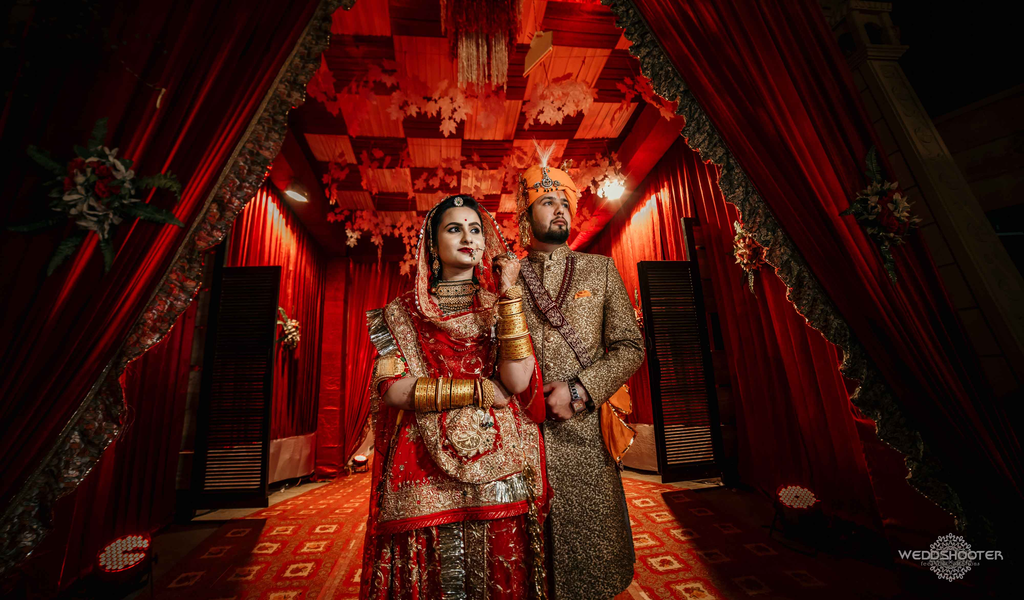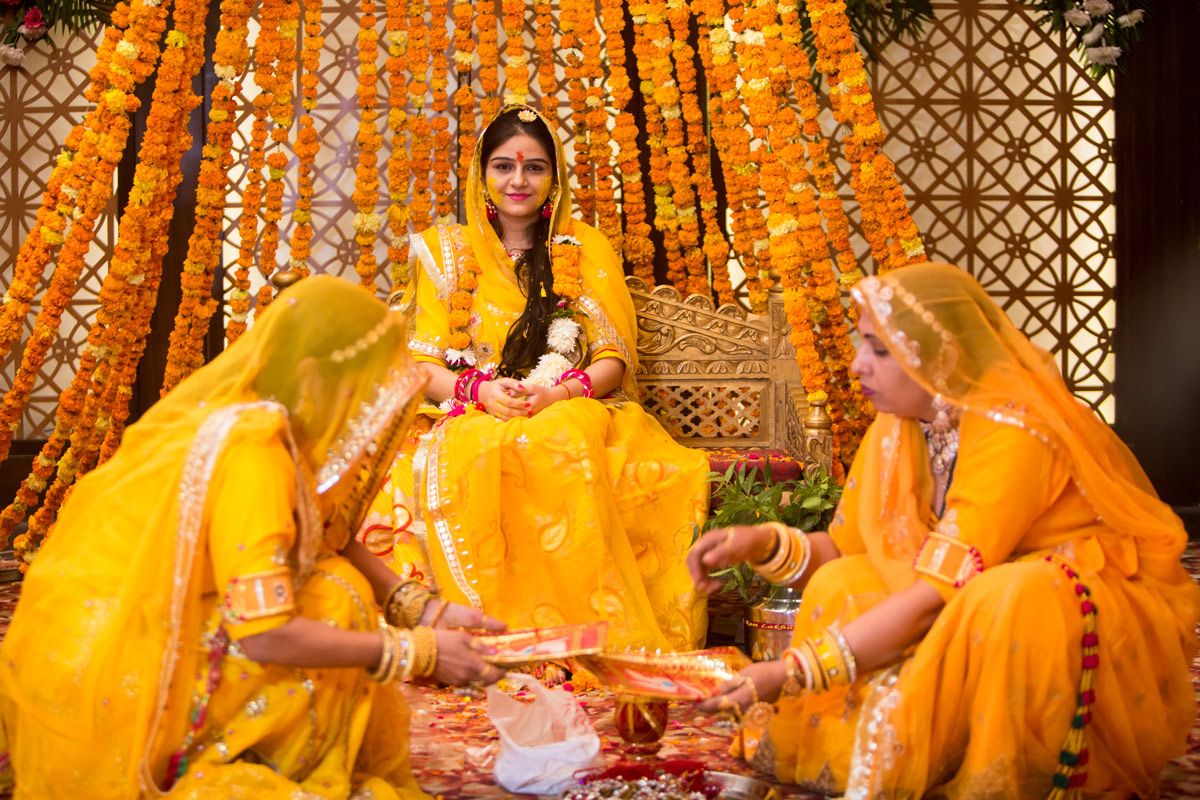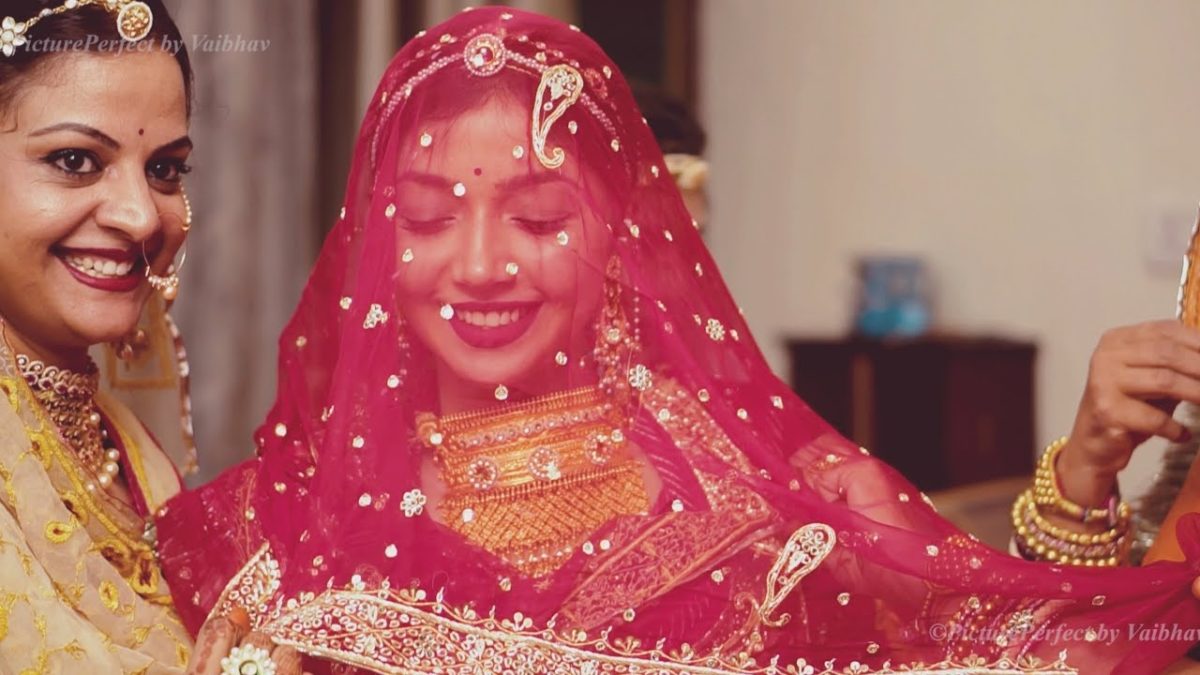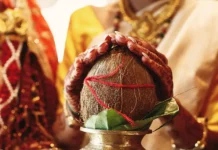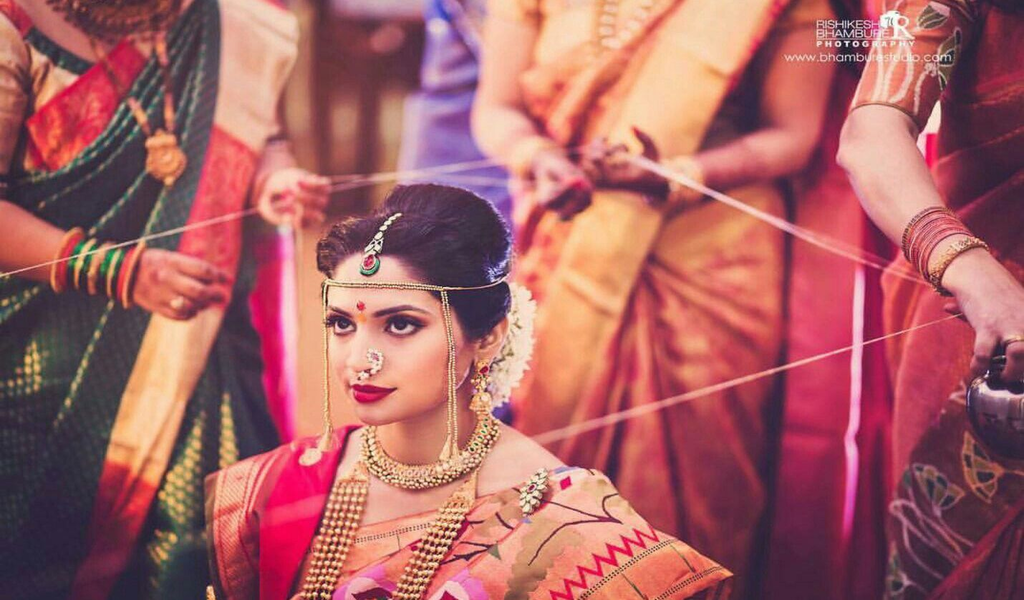Royalty, rich cultural heritage and a magnificent lifestyle are the reflection of the Rajasthan we all know and their wedding traditions are no exception. Weddings from the desert state are truly one-of-a-kind with the opulent decorations, vibrant colours, traditional and folk dance form and music. Different Rajasthani communities have different traditions and customs. Each more colourful and magnificent than the other. As much as the base traditions remain the same, their way of expressing them can be quite different. You can see classic examples of this in Rajasthani wedding traditions from the Rajput and Marwari communities.
Conventionally, the warrior class is known for rich and royal Rajasthani weddings. You can see the display of valour in modern-day weddings, whether it is in the groom carrying a sword or riding on a horse or elephant at the head of his Baraat. Each Rajput family has its own set of values that frame their wedding rituals making it a grand royal affair. Here are some Rajasthani wedding traditions that are specific to this community.
- Tilak Ceremony – The Tilak ceremony in the Rajasthani wedding is an equivalent of the traditional Roka ceremony, where the impending marriage is officially announced. A male ceremony, the men from the bride-to-be’s home bear gifts for the groom and his family (a sword, clothes, jewellery, sweets). The bride’s brother anoints the groom with a Tilak. This is nowadays, followed by an exchange of rings at a ring ceremony.
- Ganpati Sthapana – No auspicious event is organised amid Hindu traditions without invoking the Gods. And here, they invite Lord Ganesha to come home and bless the wedding. In this ceremony, an idol of Lord Ganesha is welcomed into the home for prayers.
- Pithi Dastoor – A variant of the well-loved Haldi ceremony in Rajasthani wedding where the bride and the groom are the playful victims. Relatives apply Haldi paste on the bride and groom. This paste has turmeric and sandalwood in it which bring glowing and radiant skin before the big day.
Pinterest - Mehfil – The Rajputi ‘Mehfil’ is the music and dance night. Traditionally, this is the night when the bride and the groom side all come together to enjoy the traditional form of dance. These days, we see it becoming a performance night when relatives and friends prepare and perform their own bits for all to enjoy.
- Mahira Dastoor – In this fun ceremony, the ‘Mama’ brings gifts for the bride or groom and their families. Traditionally it symbolizes that he is also sharing the expense of the wedding.
- Palla or Janev – The Palla ceremony happens in the early hours of the wedding day. The groom’s side comes to visit the bride with gifts of clothing and jewellery. On the other hand, the Janev ceremony happens at the groom’s place. He dresses in saffron and performs a ceremony before putting an orange thread around his neck. This embarks their acceptance for the new marital life.
- Nikasi – This is the Sehra ceremony. Here the groom’s sisters tie a golden thread Sehra around the groom’s head. The she applies a black Kajal to ward off any evil. This is right before the Barat ceremony.
Invidious - Varmala and Pheras – Contrary to the general practice of seven Pheras at the mandap. A Rajasthani wedding only has four Pheras at the mandap when they circle around the holy fire. And the remaining three happen later at the entrance of the bride’s new house.
- Satapadi – The bride and groom take seven steps together. Each of these steps represents a promise that they make to each other showing the commitment to build their happily ever after.
To look & book wedding venues, vendors services, please log on to wedvendors.com





